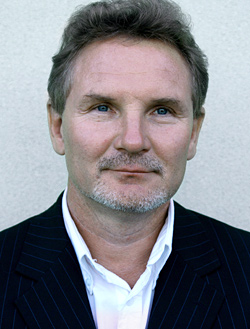Kaupo Saue
 What moves teams towards unlocking their potential?
What moves teams towards unlocking their potential?
What are TEAMS? One answer is: they are the places, where Together Everyone Achieves More. They have a potential to be a great synergetical phenomena. In reality we often see teams with locked potential: silent, low initiative, little communication, closed “stonefaces”... underperforming. Creating a certain culture and being trapped into it. Doing minimal whats nessessary and feeling unhappy.
Teamleaders are trying several strategies to unlock their teams, to create more clarity, responsibility and fun. And still, often seems they try to open the lock with bare hands, having no tools, no keys.
How can we as coaches and supervisors be useful to teams and teamleaders? What can we do and what is our responsibility? To give a fish or teach to fish? To fix the team or train the leader? What is the right blend of structure and flow, the goal orientation and people orientation? Questions, many questions.
More about the Estonian psychologist Kaupo Saue :
Kaupo Saue was born in Estonia and had originally a technical background, but has in the last 25 years been focusing on the development of individuals and organisations. At this moment he is working as Supervisor, Coach and Teacher at the International Supervision and Coaching Institute. In his work he is concerned with Organisational Development, Team Development and Coaching Leadership. Happiness is an important theme in his work.
Saue finished a study Psychology at the University of Tartu and is a certified Gestalt therapist. He is co-founder and Boardmember of the International Supervision and Coaching Institue (ISCI), he educates Supervisors and Coaches and is guest-Teacher “instruments for managers to develop teams” at the University of Tartu. Together witth Signe Vesso he released the book “Happy Team”. Unfortunately the book is, so far, only available in the Estonian language.
Take a look at the video with a short impression (in English) of his method to create the history of a project, team or group. He is inspired by the systemic and appreciative approach.





